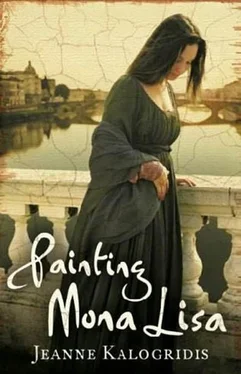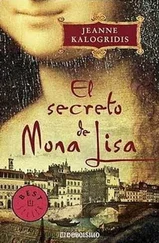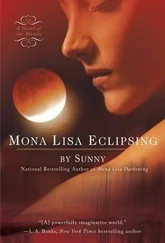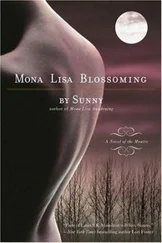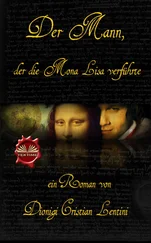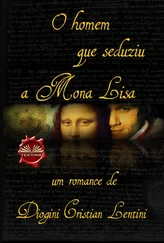Instead, the pair moved down the outermost aisle that ran the intimidating length of the sanctuary-past brown stone columns the width of four men, which were connected by high, white arches framing long windows of stained glass. Francesco’s expression was at first benign as he passed acquaintance after acquaintance in the first few rows, nodding greetings as he went. Baroncelli, dazed, did his best to murmur salutations to those he knew, but Francesco pushed him along so swiftly, he scarce could catch his breath.
Hundreds of faces, hundreds of bodies. Empty, the cathedral would have seemed infinitely vast; filled to capacity on this fifth Sunday after Easter, it seemed cramped, crowded, and airless. Each face that turned to meet Baroncelli seemed filled with suspicion.
The first group of worshipers they passed consisted of Florence’s wealthy: glittering women and men weighed down by gold and jewels, by fur-trimmed brocades and velvets. The smell of the men’s rosemary and lavender water mingled with the more volatile, feminine scent of attar of roses, all wafting above the base notes of smoke and frankincense from the altar.
Francesco’s velvet slippers whispered rapidly against the inlaid marble; his expression grew sterner once he moved past the aristocracy. The aroma of lavender increased as the two men walked past rows of men and women dressed in silks and fine wool, embellished with the glint of gold here and silver there, even the spark of an occasional diamond. Unsmiling, Francesco nodded once or twice to lower-ranking business associates. Baroncelli struggled to breathe; the onrush of faces-witnesses, all of them-triggered a profound panic within him.
But Francesco did not slow. As they passed the middle-class tradesmen, the smiths and bakers, the artists and their apprentices, the smell of fragrant herbs gave way to that of perspiration, and the fine fabrics to the coarser weaves of wool and silk.
The poor stood in the final rows at the back: the wool carders, unable to muffle their coughing, and the fabric dyers, with their darkly stained hands. Their garments consisted of tattered wool and rumpled linen, perfumed with sweat and filth. Both Francesco and Baroncelli involuntarily covered their mouths and noses.
At last, they made their way out of the huge open doors. Baroncelli took a great sobbing gasp of air.
“No time for cowardice!” Francesco snapped, and dragged him down into the street, past the clawing arms of beggars planted cross-legged on the church steps, past the slender, towering campanile to their left.
They made their way through the great open piazza, past the octagonal Baptistery of San Giovanni, dwarfed by the Duomo. The temptation to run was great, but too dangerous, although they still made their way at a pace which left Baroncelli breathless despite the fact that his legs were twice the length of his employer’s. After the dimness of the Duomo, sunlight seemed harsh. It was a gloriously beautiful, cloudless spring day, yet to Baroncelli it seemed ominous all the same.
They veered north onto the Via Larga, sometimes referred to as “the street of the Medici.” It was impossible to set foot upon its worn flagstones and not feel Lorenzo’s iron grip upon the city. The wide street was lined with the palazzi of his supporters: of Michelozzo, the family architect, of Angelo Poliziano, poet and protégé. Farther down, out of sight, stood the church and convent of San Marco. Lorenzo’s grandfather, Cosimo, had rebuilt the crumbling cathedral and founded the convent’s famous library; in return, the Dominican monks revered him and provided him with his own cell for those times he was given to contemplation.
Cosimo had even purchased the gardens near the monastery, and Lorenzo had transformed them into a sculpture garden, a luxurious training ground for young architects and artists.
Baroncelli and his co-conspirator approached the intersection with the Via de’ Gori, where the cupola of Florence’s oldest cathedral, San Lorenzo, dominated the western skyline. It had fallen into ruin, and Cosimo, with the help of Michelozzo and Brunelleschi, had restored its grandeur. His bones rested there now, with his marble tombstone set before the high altar.
At last, the two men reached their destination: the rectangular gray bulk of the Medici palazzo, somber and stern as a fortress-the architect, Michelozzo, had been given strict instruction that the building was not to be ornate, lest it rouse suspicion that the Medici considered themselves above plain citizens. Yet the modest design still emanated sufficient magnificence to be suitable for entertaining kings and princes; Charles VII of France had dined in the great hall.
It struck Baroncelli that the building resembled its current owner: The ground floor was made of rough-hewn, rustic stone, the second floor of even brick, and the third was crafted of perfectly smooth stone capped by an overhanging cornice. The face Lorenzo presented to the world was just as polished, yet his foundation, his heart, was rough and cold enough to do anything to maintain control over the city.
It had taken barely four minutes to reach the Palazzo of the Medici, which dominated the corner of the Vias Larga and Gori. Those four minutes passed as though they were hours; those four minutes passed so swiftly Baroncelli could not even recall walking down the street.
At the southern corner of the building, closest to the Duomo, stood the loggia. It was covered from the elements, but broad archways offered its shelter to the street. Here, citizens of Florence were free to meet with others and converse, ofttimes with Lorenzo or Giuliano; a good deal of business was conducted beneath its stone ceiling.
On this Sunday morning, most folk were at Mass; only two men lingered in the loggia, talking softly. One of them-wearing a wool tabard that marked him as a merchant and possibly one of the Medici’s own bankers-turned to scowl at Baroncelli, who ducked his head, nervous at the prospect of being seen and remembered.
A few steps more, and the two conspirators stopped at the thick brass doors of the palazzo’s main entrance on the Via Larga. Francesco pounded adamantly on the metal; his efforts were finally rewarded by the appearance of a servant, who led them into the magnificent courtyard.
Thus began the agony of waiting while Giuliano was summoned. Had Baroncelli not been in the grip of fear at that particular moment, he might have been able to enjoy his surroundings. At each corner of the courtyard stood a great stone column connected to the others by graceful arches. Atop those was a frieze, adorned with pagan-themed medallions alternating with the Medici crest.
The seven famous palle , or balls, were arranged in what looked suspiciously like a crown. To hear Lorenzo tell it, the palle represented dents in the shield of one of Charlemagne’s knights, the brave Averardo, who had fought a fearsome giant and won. So impressed was Charlemagne that he allowed Averardo to design his coat of arms from the battered shield. The Medici claimed descent from the brave knight, and the family had borne the crest for centuries. The cry “Palle! Palle! Palle!” was used to rally the people on the Medici’s behalf. Of Cosimo the Elder, it had been said that he had branded even the monks’ privates with his balls.
Baroncelli let his gaze follow the path from one medallion to the next. One showed Athena, defending the city of Athens; another remembered the winged Icarus, soaring for the heavens.
At last he dropped his gaze to the courtyard’s centerpiece, Donatello’s bronze David . The sculpture had always struck Baroncelli as effeminate. Long curls spilled out from beneath David’s straw shepherd’s hat; his naked, curving form bore no masculine muscularity. Indeed, one elbow was crooked with the hand resting on the hip in a girlish posture.
Читать дальше
Конец ознакомительного отрывка
Купить книгу
